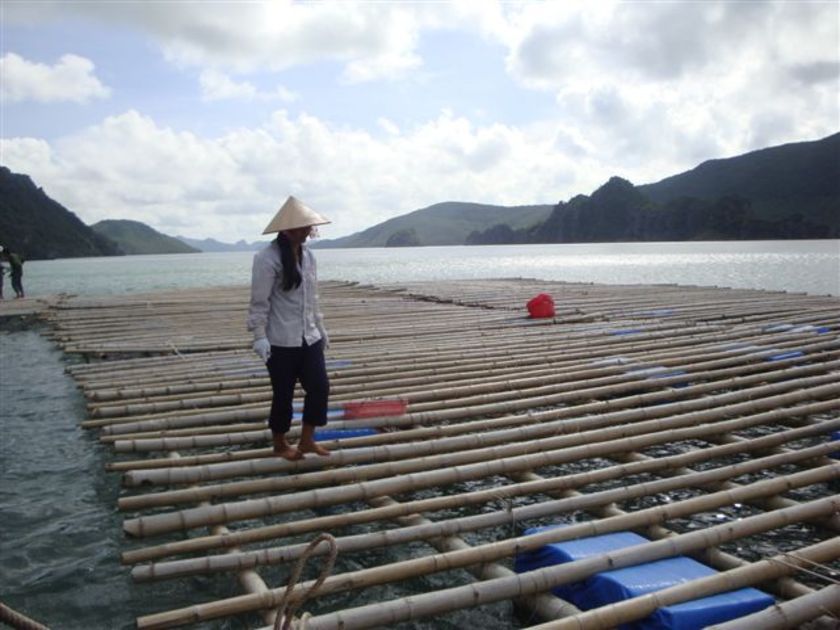The fledgling farmed oyster industry along the north-east coast of Vietnam has taken off under the guidance of a team of Australian shellfish experts.
 |
| Pham Thi Lieu working on her oyster farm at Bai Tu Long Bay. (Kerry Staight, ABC TV, Landline) |
Among them is Dr Wayne O\'Connor from the Port Stephens Fisheries Institute in New South Wales.
Dr O\'Connor says the growth of the industry has been phenomenal.
"Within the space of three years they\'ve virtually gone from zero oyster production in the north through to about 2,000 tonnes now. To put that in perspective that\'s about 50 per cent of New South Wales\' current production," he said.
Dr O\'Connor was hired by the Australian Centre for International Agricultural Research (ACIAR) to improve production at Vietnam\'s government-owned oyster hatchery on Cat Ba Island.
Hatchery director Dr Le Thanh Luu says Dr O\'Connor and other scientists have trained local staff on algal culturing, spawning and nursery techniques.
"Within only two years we\'ve been able to produce seed," he said.
The hatchery is now producing 100 million spat a year.
Until recently most of the juveniles were bought by a large corporate farm in Bai Tu Long Bay, north-east of the famous Halong Bay.
But the hatchery is now selling spat to small family-owned farms and Dr O\'Connor says the project has enormous potential to alleviate poverty.
"Now more and more small farmers are coming on board. We\'ve got about 200 just within the Quang Ninh area and we have estimates there\'s about 10,000 small farm holders there that could potentially use this technology," he said.
"They\'ve got fish farms. They\'re out there, they\'re working in the ocean. They\'ve got the opportunity to actually farm oysters as well."
Most local seafood producers earn an estimated average income of between $1,800 and $3,000 a year.
Former forestry worker Pham Thi Lieu says the switch to oysters is already paying off for her and her family.
"We\'ve been able to afford a new house, which we built two years ago," she said.
"Now we are using our profits to enlarge our farm.
"For example, last year I got about VND 150 million ($8,800) and invested it all into this farm.
"If I have any extra money I will save it for my children and grandchildren."
While the rate of production is progressing quickly and demand is so far exceeding supply, Dr O\'Connor says the quality of the molluscs needs to improve.
Most oysters are grown in clumps on recycled shells, which are hung off rafts.
While the method is popular because it is cheap, the oysters often end up different shapes and sizes which reduce their marketability, particularly as an export product.
In a country where many waterways are polluted, the industry also faces the challenge of convincing consumers the shellfish are safe.
"The Vietnamese authorities are very well aware of the needs for quality assurance," he said.
"They\'ve selected sites that are comparatively remote so trying to move away from areas of high development.
"We\'re now talking about subsequent plans to start to transfer the technology to actually do the sorts of monitoring that we would have here in Australia to ensure the quality of the product."
Another batch of broodstock will also be transferred to Vietnam from Tasmania later this year.

Leave your comment on this story